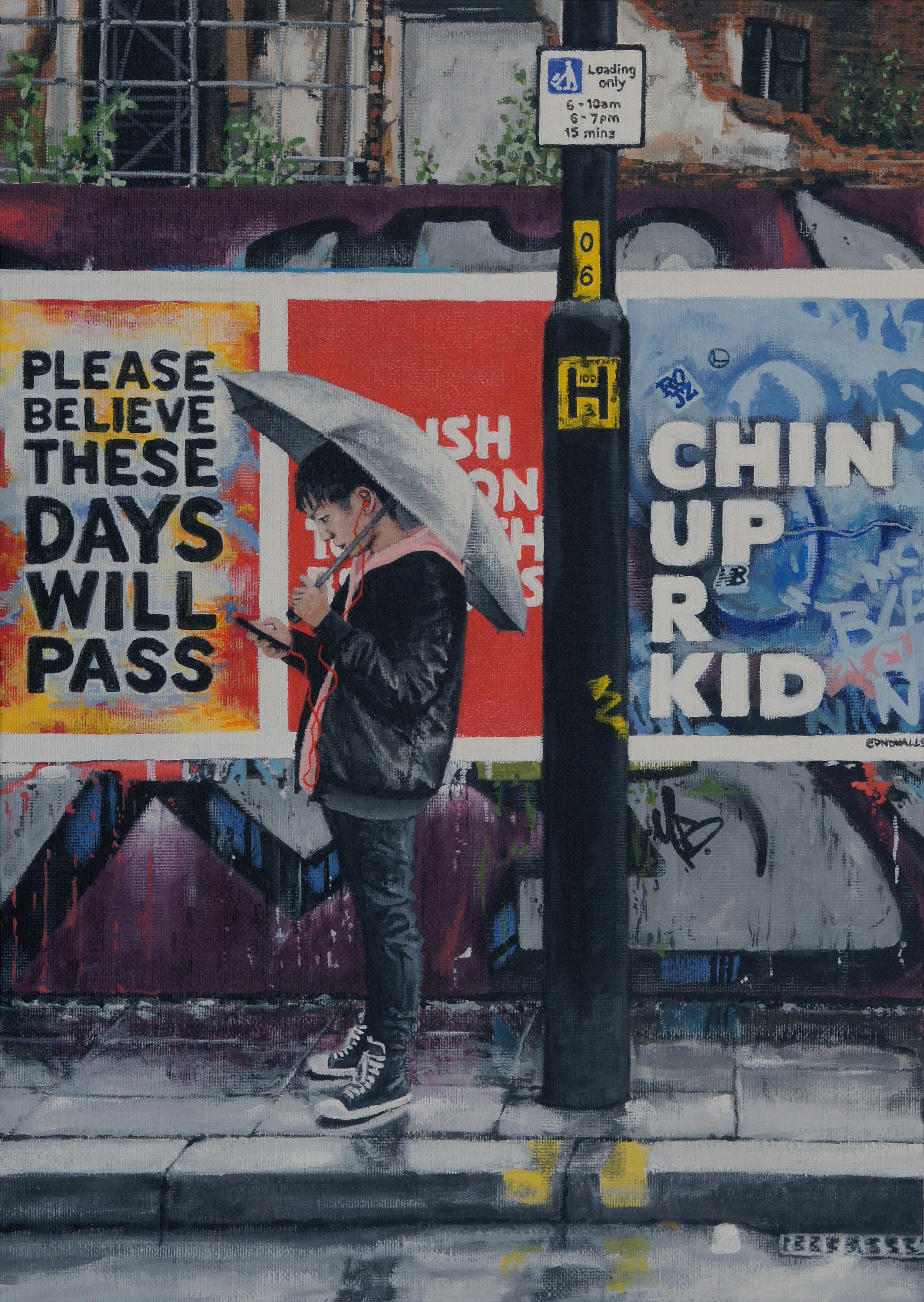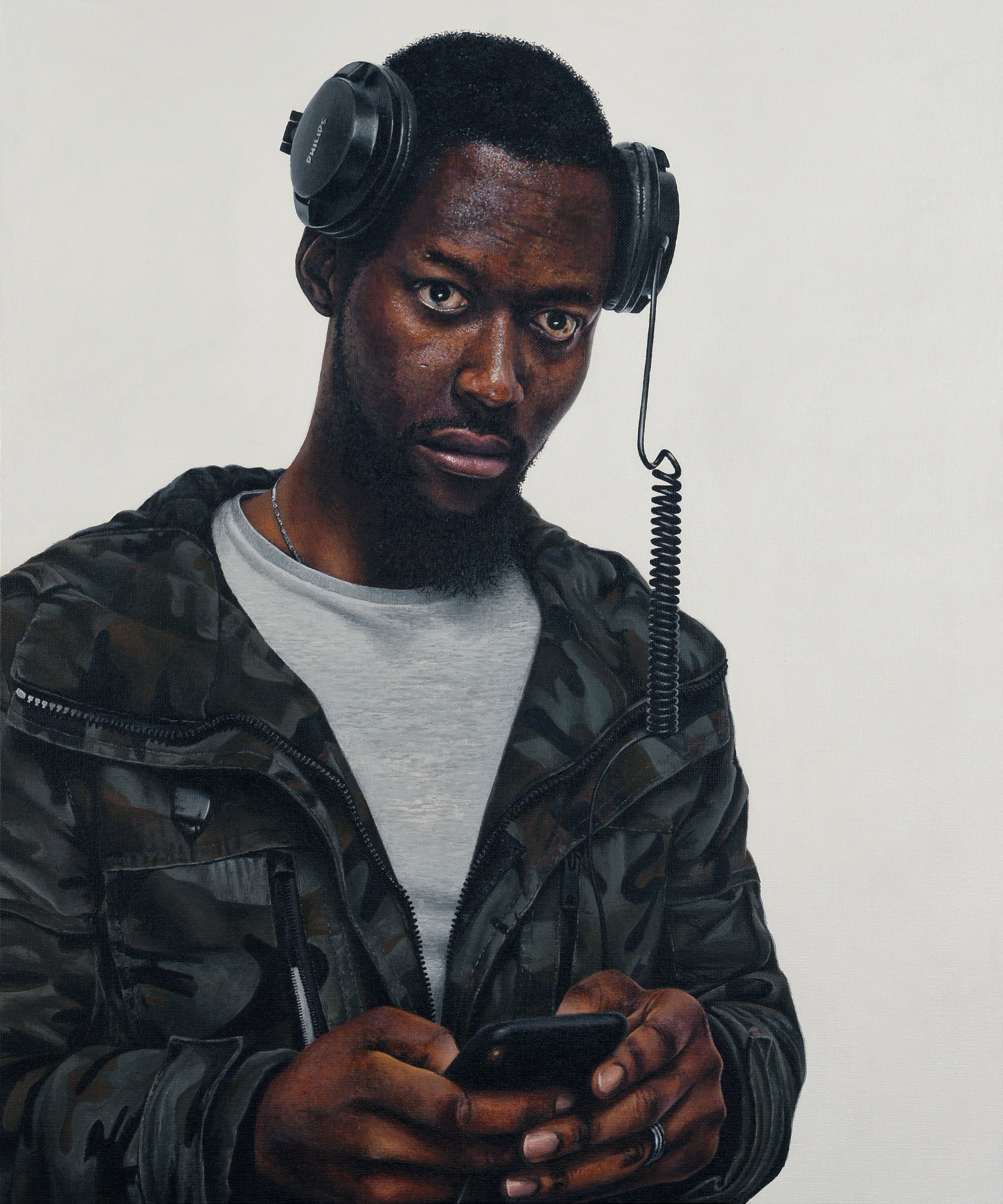ARTIST INTERVIEW: Peter Davis
Please introduce yourself and describe your journey as an artist. What ignited your passion for the arts?
Hi, my name is Peter Davis and I paint portraits and urban landscapes. I am a member of the Contemporary British Portrait Painters (CBPP) and the Manchester Academy of Fine Arts (MAFA).
My passion for art started as a child when my mum used to take me to art galleries. I especially loved looking at paintings from previous centuries and seeing how people looked, dressed and what they were doing.
You are a social realist painter. How does your style of work reflect the narrative?
Being fascinated with situational paintings and what they tell us about the period in which they were painted has definitely influenced the themes in my work. My paintings are stories of our time, of people going about their lives, tech in hand.
What inspired you to create your Zeitgeist series? Why are you so fascinated by our relationship with technology?
Around ten years ago whilst I was on a train, I began noticing that everyone around me were heads down, lost in their smartphones. I felt like I was witnessing the start of a big shift in our behaviour. It was around that time that I decided to start a series of portrait paintings, which I called ‘Zeitgeist’, that would document our increasingly addictive relationship with our personal tech. Since then, I have painted people from three to eighty-three, on all kinds of devices from smartphones and tablets, to wireless headphones and VR headsets.
Why do you think art is a good way to communicate society issues? What thoughts and feelings would you like to evoke from the viewers of your paintings?
Seeing people on their smartphones 24/7 is so common that we don’t give it a second thought anymore. There’s a great quote by the American writer Henry Miller, ‘What the painter sees, he is duty-bound to share. Usually he makes us see and feel what we ignore or are immune to’ As a social realist, my paintings are a commentary of our digital epoch. I like the thought that they hold a mirror up to what we have become and give us clues to what may lie ahead.
What is your process for creating one of your urban landscapes? Describe your journey; from finding your subject, to finishing the piece. What are the characteristics of a successful composition?
When it comes to my urban landscapes, I am always on the lookout for interesting street scenes, especially ones with street art, paste ups or graffiti. The people I incorporate into these paintings I either know, have seen from afar, or have street cast and asked them to pose for me.
I sometimes do a quick sketch whilst I’m there, but i’ll also take lots of photographs. Then, once I am back in the studio, I spend a lot of time exploring different compositions, as it plays an important role in the telling of the narrative. I’ll move things around and add or take away things until I’m happy with how the painting is going to look. I always try to create a powerful dynamic between the individual and their surroundings.
Take one of my recent paintings that I have done, ‘Generation Regeneration’. It tells the story of the relentless gentrification that’s going on in Manchester. I wanted the composition to have a 50/50 split at the top of the painting to represent the tipping point of modernisation - with the old building from the city’s industrial past on the left, versus the scaffolding of the new building on the right. I also deliberately included some angles in the composition such as; the curve of the pavement, the double yellow lines and the arc of the negative white space of the graffiti, all designed to draw you into the painting and pull your eye to the girl on her phone. I make sure all the ingredients in a painting are there for a reason.
What does a typical day look like for you in the studio?
If I can get into my studio for 7.30am, then that’s a good start. I don’t know why, but I tend to see and mix colours better early doors. I then like to paint non-stop until lunchtime, have a 20-minute break, then go back to the easel until at least 5.30-6pm. Invariably, it doesn’t always work out like that, and life often gets in the way.
How does your artwork represent you as an individual? Would you say you are quite observant of your surroundings?
I would say that the themes in my paintings are definitely a result of my creative journey. I think I am very visually aware, and I find painting different people with their personal technology so interesting; be that in my studio or on the street. Life in our digital age is evolving so fast, and there’s such a wealth of inspiration, that I don’t ever see me getting tired of it.
Out of all your artwork, which piece are you most proud of and why?
I feel incredibly honoured that the lockdown portrait of my mum, ‘Stay Safe Mum (elbow elbow)’ has recently been purchased by Gallery Oldham for their permanent collection. To think that future generations visiting the gallery might look at this painting in the same way that I look at historic paintings in public galleries, makes me feel immensely proud.
What has been your biggest achievement so far as an artist? Has there been any challenges?
Without a doubt, my career highlight to date is having my portrait ‘Wetin dey’ selected for the John Moores Painting Prize exhibition in 2020, at the Walker Art Gallery in Liverpool. It’s one of the UK’s most respected painting competitions and past winners have included artists such as Patrick Heron, David Hockney, Euan Uglow and Peter Doig.
Being in the JMPP meant so much to me, probably more than any other painting exhibition. The first time I went to see it was with my Mum when I was a teenager. I still remember that show vividly (it was the year Tim Head won with his painting ‘Cow Mutations’), and I’ve enjoyed going back to this incredible biennial exhibition ever since.
Why do you think art is important in society?
I believe art can tell us, more powerfully than any other medium, about the period in which it was made. It can bring our attention to things in our society that we may not have seen (or tried to ignore), drive discussion and inspire change.
Conversely, art can also offer some beauty and escapism from our crazy world... and boy do we need that at the moment!










